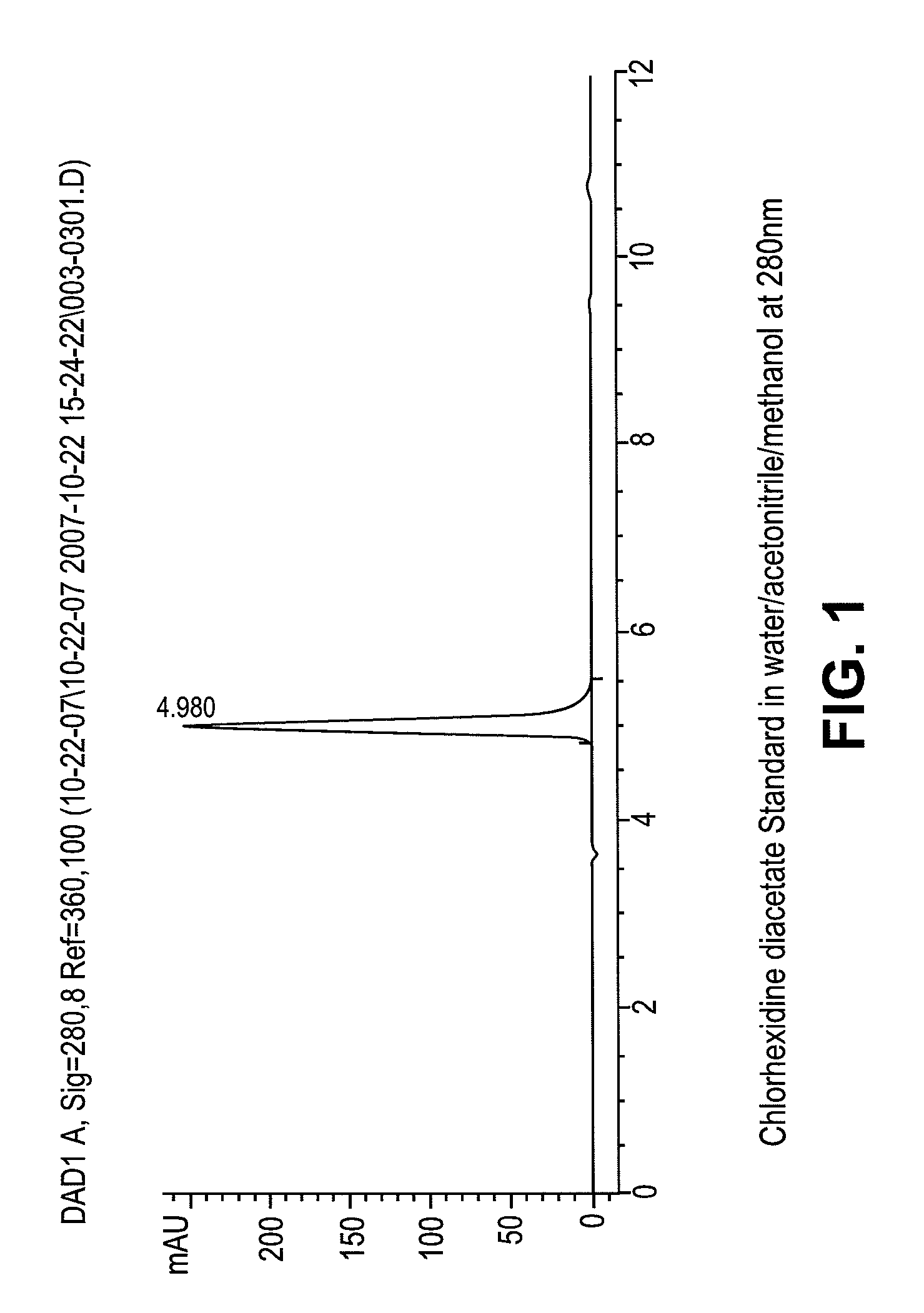Stable melt processable chlorhexidine compositions
a technology of chlorhexidine and composition, which is applied in the direction of biocide, prosthesis, catheter, etc., can solve the problems of discomfort or illness, time-consuming extra step of coating or soaking, and difficulty in treating, so as to reduce microbial growth, reduce microbial growth, and reduce microbial growth
- Summary
- Abstract
- Description
- Claims
- Application Information
AI Technical Summary
Benefits of technology
Problems solved by technology
Method used
Image
Examples
example 1
Compound Tecothane®-2095A Resin With 10% Chlorhexidine Diacetate
[0032]Tecothane®-2095A was coated with 5% w / w polytetramethyleneoxide (PTMO) of molecular weight (MW)=1000 by mixing 45.1 gram (g) of PTMO with 900g Tecothane®-2095A. The PTMO coated resin and chlorhexidine diacetate were separately fed into an 18 millimeter (mm) Leistritz twin screw intermeshing extruder (Somerville, N.J.) from K-Tron feeders (Pitman, N.J.) at rates of 2.5 kilograms per hour (kg / hr) and 0.25 kg / hr, respectively. The extruder was set at 112 revolutions per minute (rpm) for screw speed and the barrel zone temperatures were set from 145° C. thru 178° C. The extrudate was pelletized into small pellets.
example 2
Compound Low Melt Temperature Tecoflex-93A With 10% Chlorhexidine Diacetate
[0033]Low melting temperature Tecoflex-93A and chlorhexidine diacetate were separately fed into al 8 mm Leistritz twin screw intermeshing extruder from K-tron feeders at rates of 1 kg / hr and 0.1 kg / hr, respectively. The barrel zone temperatures were set at 121° C. for all zones. The extrudate was pelletized into small pellets.
example 3
Synthesis of Chlorhexidine Dodecanoate
[0034]15.1 g chlorhexidine base was slurried in 150 milliliters (ml) of isopropyl alcohol. 13.2 g of dodecanoic acid was added to the slurry (2.1 molar equivalents). The solution went clear initially and later precipitation occurred. Precipitate was rinsed with 100 ml isopropyl alcohol and filtered twice, after which it was vacuumed dried at 25° C. for 24 hrs. Yield was 88.7%.
PUM
| Property | Measurement | Unit |
|---|---|---|
| temperature | aaaaa | aaaaa |
| temperature | aaaaa | aaaaa |
| temperature | aaaaa | aaaaa |
Abstract
Description
Claims
Application Information
 Login to View More
Login to View More - R&D
- Intellectual Property
- Life Sciences
- Materials
- Tech Scout
- Unparalleled Data Quality
- Higher Quality Content
- 60% Fewer Hallucinations
Browse by: Latest US Patents, China's latest patents, Technical Efficacy Thesaurus, Application Domain, Technology Topic, Popular Technical Reports.
© 2025 PatSnap. All rights reserved.Legal|Privacy policy|Modern Slavery Act Transparency Statement|Sitemap|About US| Contact US: help@patsnap.com



